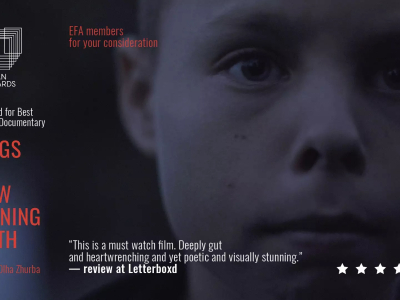Julia Gnat is NAMU's Deputy Director General for International Relations and Project Activities.
Julia is a year working at NAMU and one of the projects that can present her contribution to the rapid development of the National Art Museum of Ukraine - in the exhibition «Phenomenon. Monuments of the Friary Monastery ”(26.12.2018 - 31.03.2019), which she coordinated. Yulia told Valery Korchevskaya /.../ about the organization of the project, in which the sacred art with the modern, the technical support of the museum with the thomas, the important state theme and the patronage culture of modern citizens were surprisingly met. And also about how 14 years of experience in the banking sector "helps" in the management activities in the state museum.
We are talking about the unprecedented exhibition project "Appearance. Monuments of the Fraternal Monastery ». The curator obviously set one task, and the organizational group you coordinated had an ambitious task. What was it? Did you miss the biggest, most unexpected museum project?

An organizational team was really working on this project, in which everyone had a role. And if you focus on each member of the team, you can say that his role was decisive. Looking at the role of the curator of the exhibition, Galina Alekseevna Belikova, who did the study of the material and the context, is the custodian of all this volume of material, all the conclusions and the numerous lines embedded in this material, she is the key. The role of Ivan Svitlychny, the artist who was in this case the designer of the exhibition, the architect of the exhibition, was decisive in how to present artifacts and scientific research.
It was extremely important to create a favorable field for their interaction. The material itself has a complex internal structure: art, historical aspect, social and religious aspect, Orthodox fraternities, brotherly movements - how they were formed, on the basis of which motivations, values that have reached us through the centuries and are still relevant today, on the basis of certain practices that are embedded in our daily lives as manifestations of civic engagement, and so on ... This structure of material could not be manifested through a simple approach to exposure.
The whole practice of museums indicates that very much it could ...
Yes, you are right. You can "dump" the viewer on your head with a stack of information - visual, text and audio - "do what you want." We have fulfilled our main function - we have presented the results of many years of research. But for me, an important aspect in the work of the National Art Museum of Ukraine is that we, like any other modern organization, create a human experience - user experience. That is, we are interested in a) what kind of experience we create to the viewer, and b) how much the set design of this experience translates into the culture we demonstrate in the material.
If we are talking about Ukrainian Baroque, then how far is the approach we used in the presentation of the material to be Baroque on the one hand and modern on the other. It was interesting to watch the evolution of the project participants' relationships, when everyone revised their initial ideas and, after listening to the arguments of others, moved on to a new stage of understanding: during numerous discussions, meetings, the team, as in sculpture, cut off the extra large amount of information or a conclusion, or some laconic medium, or one that is both informative and sensual.
It is clear that the curatorial researcher focuses more on what he is showing, but the question of how to show is closer to the practices of exhibiting contemporary art. In the beginning, as you said, there were different variations, from very simple - to hang a lot of information tablets on the walls and hang icons - to place information on electronic media☺. But such a laconic, even minimalistic representation of masterpieces of lush Ukrainian baroque, where every icon or robe is presented as jewelry, with respect and love, highlighted in color, light, accentuated by shadows - this move is very interesting. How did you get there?
I will first comment on the first part of the question - WHAT and HOW. Let's say scientists have researched and accumulated "what". Or, if you turn to the experience of the curator of the exhibition of contemporary art - artists have created a "what." The curator adds his own "what", that is, what he says on the basis of the collected material, what he expresses, working with works of art, artists. The Appearance project also raised the question: what exactly does the curator want to say in what her key statement is? Did she express her position? Did we just show the collected material?



